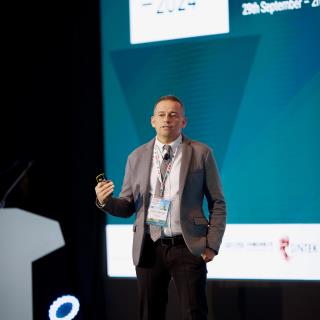The shift to polythene cement bags by some cement producers has helped them improve brand differentiation as well as offering benefits in terms of maintaining a quality product throughout the packing and distribution process. To achieve this bagging success, key product and packaging process parameters have been improved. By David Khanna, BPI Visqueen, UK.
In the mature market of industrial packaging, some cement manufacturers have made the switch to polythene bags in a bid to enhance protection and improve handleability – increasing all-weather shelf life and curbing messy seepages.
Polythene bags are also seen as an important marketing vehicle which can transform the shelf appeal of an otherwise commoditised product, as well as creating an opportunity to turn cement into a premium product. As new polythene packs have reached the market and challenged the status quo of paper bag usage, new expectations have been established.
It’s good to vent
The shift towards polythene has been the result of the cement industry’s long recognition of the benefits of this type of packing, but a significant stumbling block remained until recently. A natural side effect of packing cementitious material into a polythene bag is trapped air, exacerbated by the intentional aeration of the product in the production and bagging process needed to create flow. To make polythene packaging a viable option for the bagging of cement, this air needs to be managed back out of the process to achieve a uniform and stable pack, essential for efficient palletisation. Ultimately, a polythene sack in this application needs to be vented. Achieving this whilst maintaining the intended waterproof credentials of polythene is no easy feat and a technologically-advanced approach to venting is essential. It is exactly this requirement which can also decrease line speeds.
Closing the speed gap
Despite the fact that line speeds are reduced when employing vented polythene bags compared with traditional paper packaging, the holistic benefit of using polythene is far greater for cement manufacturers, as technology adoption rates show. However, more can be achieved to enhance venting technology and impact more positively on line speeds.
To that end BPI Visqueen has been working with leading cement manufacturers to enable them to reach full optimisation speeds for equipment using vented polythene sacks.
When enhanced venting is combined with the most up-to-date packing technology, the line speed gap between those using polythene versus paper sacks is converging rapidly. For example, where a standard vented polythene line would have previously achieved output of 500 sacks per hour, this can now be optimised to well over 2000 sacks per hour – a great deal closer to the line speeds of traditional paper sacks.
Building on foundations
BPI Visqueen’s vented polythene sack, Ventisack, is the culmination of significant R&D efforts including a rigorously tested, robust venting system. The company recognised that the shift to polythene bags would not be an overnight phenomenon as cement producers initially focus on specifying the packing equipment which can process the new vented polythene sacks rather than the packaging itself. The demand for specialist bagging equipment that can process polythene vented sacks has increased significantly and demand for vented polythene sacks for already-installed lines has doubled, laying the foundations for future demand.
To gear itself to accommodate this trend, BPI Visqueen has invested in a new polythene extrusion line alongside a dedicated printing and conversion line to cope with the increasing demand for vented polythene sacks. Moreover, an in-house technical team specialises in supporting customers as they transition from paper to plastic, and helps avoid a reduction in manufacturing and production efficiencies.
Combining efficiency enhancements with clear market trends is expected to ensure polythene will dominate cement packaging in no time.
Article first published in International Cement Review, March 2015.
